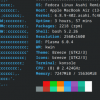Linux-kernel virtualisation -- finally on the fast track
Progress in the virtualisation world sometimes seems slow. Xen has been the hot topic in the para-virtualisation area for some years now -- the first "stable" release was announced in 2003 -- but the code remains outside of the mainline Linux kernel. News from that project has been relatively scarce as of late, though the Xen hackers are certainly still out there working on the code. On the other hand, KVM appears to be on the fast path. This project first surfaced in October 2006; it found its way into the 2.6.20 kernel a few months later. On 25 February, KVM 15 was announced. This release has an interesting new feature: live migration. The speed with which the KVM developers have been able to add relatively advanced features is impressive; equally impressive is just how simple the code that implements live migration is.
KVM starts with a big advantage over other virtualisation projects: it relies on support from the hardware, which is only available in recent processors. As a result, KVM will not work on the bulk of currently deployed systems. On the other hand, designing for future hardware is often a good idea -- the future tends to come quickly in the technology world.









































































